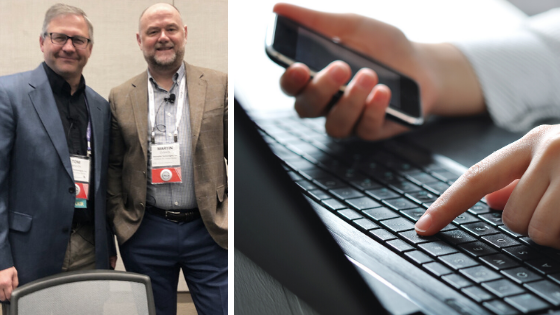
Community banks, like other financial service providers face a number of challenges in providing a distinctive customer experience and delivering consistent service across web, contact center and retail platforms.
But Community Bank, N.A., a 250-branch institution based in upstate New York, found a cost-effective solution through Avaya and its business partners that also improved branding and marketing, while meeting increased customer demand for access options.
Two Swampfox executives, Martin Cusack, vice president of contact center consulting, and Tom Hanson, product and marketing, presented a case study of the bank’s experience in a session, “Transforming a Traditional Call Center to a Customer Experience Center,” at Avaya ENGAGE 2020.
A full-service financial institution, Community Bank, N.A. wanted to retain a high level of customer service throughout its operations. With 614,000+ customers, nearly 3,000 employees and more than $11 billion in assets the institution uses the phrase “bank happy” to sum up its personalized approach to customers.
However, there were a number of customer-facing issues, including:
- No unique branch voice greeting
- Having to call to find lobby and drive-through hours
- No online ability to look up branches by zip code
- A relatively high number of after-hours calls from customers wanting information about loans or other products
In addition, the bank had to roll in 46 new branches during the project due to a major acquisition.
Building on the bank’s call center foundation with Avaya Elite, the Swampfox team worked with Avaya and Windstream to unify the call center, retail branches and digital customer presence into customer experience cloud platform. The project took about three months to complete.
“This is a conservative bank, and we didn’t want to interrupt the existing call center practices,” said Cusack. “So we tied our preintegrated client to their website, so that customers can do a click-to-call or receive a callback, so they don’t have to wait on hold.”
Now, after-hours calls can be returned during business hours by dedicated agents – an action that avoided seven days and 18 hours of wait time in one month. In addition, customers who needed password resets were automatically routed to an outsourced service, resulting in rapid, real-time resolution. “The after hours improvements have been really big for the bank and its customers,” added Cusack.
Results of the project have been phenomenal, said Hanson. Key metrics include:
- 10.43 percent increase in contact center traffic (with new branches)
- 2.2 percent increase in answer rate
- 35 percent decrease in abandon rate
- 66 percent increase in average time to abandon
- 4.1 percent increase in service level attainment
- 42 percent increase in outbound (returned) calls
- 2 percent of caller located a branch, listened to hours and location without having to speak with an agent
- 33 percent of customers were connected directly to a branch
“Intelligent callback and selective self-service are powerful tools,” said Hanson. “This type of transition to a customer service center can bring a modern-day approach to high-touch banking, while setting up a framework for future omnichannel services.”
